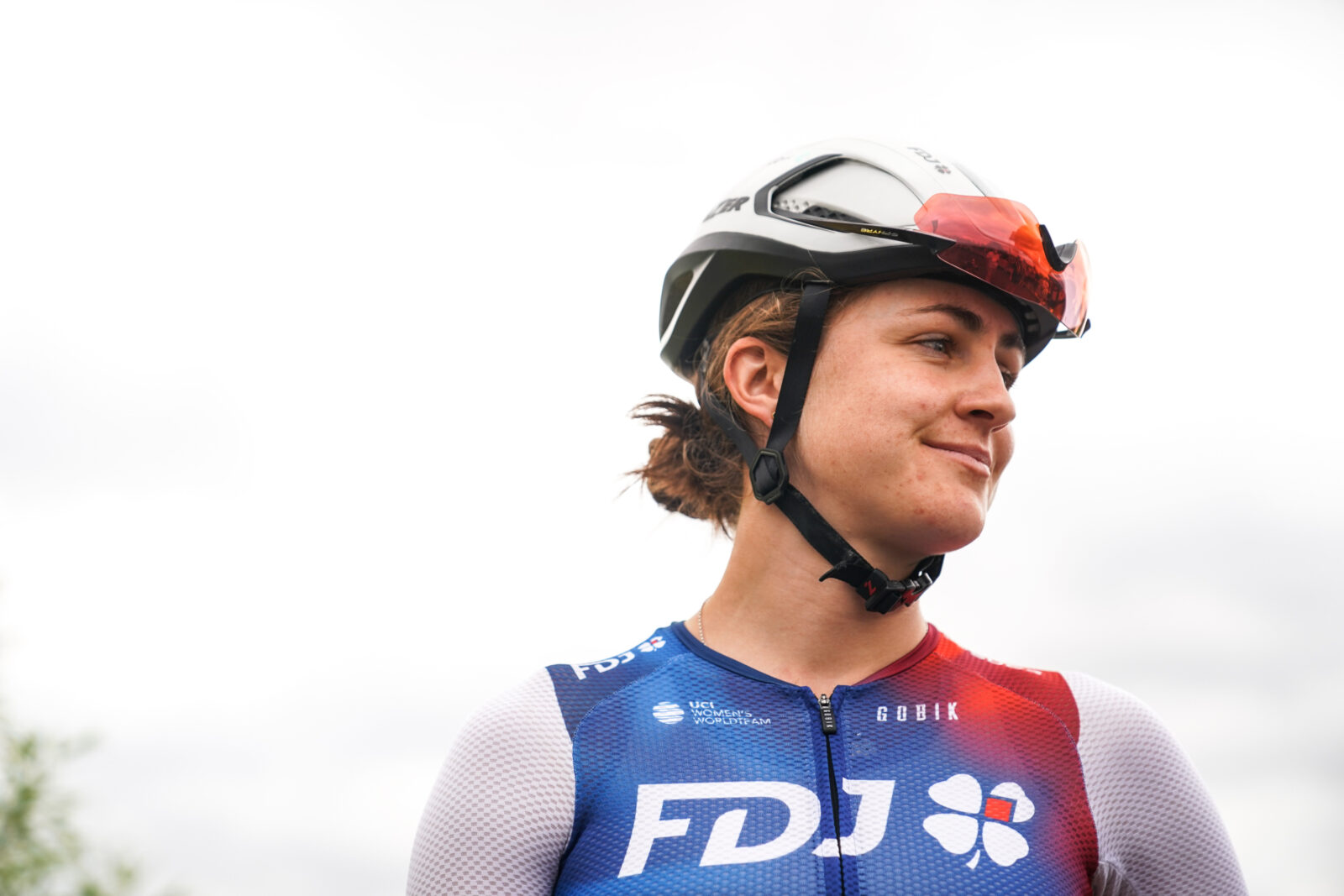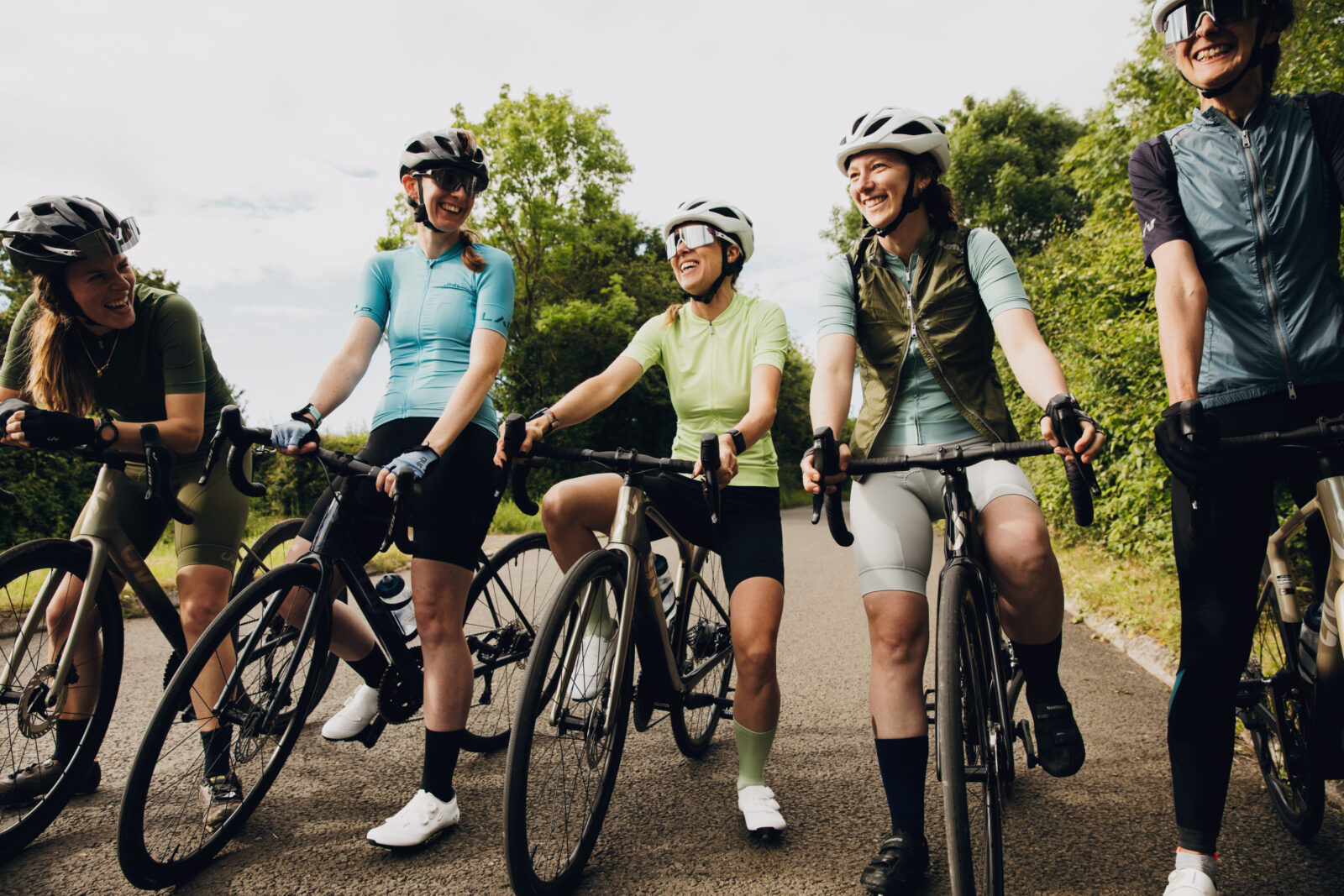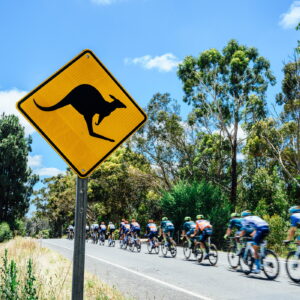When Australian Olympic gold medalist Grace Brown began cycling, the chances of spotting another female rider were slim, but things are changing as Sam Coombs found out.
The revolution of cycling women
“If I saw another female out there on the roads, I would know her,” claims Brown, who has forged a successful career in a sport long dominated by men. Indicative of a time where very few women were on the road on two wheels, times have changed, where one in three cyclists on bike paths are now women. A gradual movement brought on by several factors, Australian women are not only embracing road cycling, recreationally and professionally, but creating an exciting and much-needed shift towards female inclusivity, attitudes, and opportunity for younger generations.
Any seasoned road cyclist in this country would have noticed an increase in the number of women joining the ranks. Female cycle groups are popping up and swelling in numbers, as is female participation in cycling club memberships and international bike tours.
Female competitive road cycling events are presenting greater opportunities like never before and with an unprecedented spike in marketing, branding and media visibility, women’s professional cycling is undergoing something of a revolution, with media coverage of female cycling events having piqued the interest of women taking up recreational riding across the country and inspiring younger fans to get on board.

According to Bicycle Network – Australia’s biggest bike riding organisation, which promotes the sport through cycling events, activities, and improving riding conditions throughout the nation – female participation in cycling is steady and rising.
“At Bicycle Network, we’ve observed strong growth in participation among female riders, particularly on rail trails, gravel paths, and through the rise of e-bikes,” says the not-for-profit organisation, whose own events have witnessed an uptick in female riders.
Safety, as Brown notes, has been a particular barrier for many women. “Women do tend to be risk-averse,” she notes, acknowledging that while the leisure side of the sport has taken off with women’s groups, safety remains a key issue for many female road cyclists, with improved safety through enhanced infrastructure the key drivers behind the recreational cycling momentum.
According to recent research carried out by Monash University, a survey of more than 700 participants shed some light on the underlying concerns that hold women back from embracing road cycling.
From those interviewed, 61 per cent of women cited concerns about cycling in traffic deterring them from road cycling, while knowledge gaps in buying a bike and confidence in its maintenance, changing a tyre, etc. rated highly as a barrier to women as opposed to men.
“There are changes that need to be made at the local level,” notes Brown, who believes inclusivity and knowledge are paramount.
“Many women are going into bike shops and coming up against condescending attitudes that they don’t know anything about cycling. But what needs to happen instead is that women are supported and provided with contextual information, so they are confident in their ability to solve problems on a bike on their own.”
The growing need for the cycling industry to properly address inclusivity through specific clothing design has seen brands like Liv, Muze and Birds on Bikes catering to the female form through their apparel designs, fit and style.
With female cycling communities and hubs all around the country, like Wheel Women, Chicks Who Ride Bikes, Ladies Back on Your Bike, and Pink Flamingoes, to name a few, there has never been a greater wave of encouragement for women getting out on two wheels. Empowering and inspiring women from all backgrounds to ride, these groups not only provide safety in numbers and promote a love of cycling, but offer skill-building opportunities, a crucial factor for many women breaking into the sport.
Homegrown events are popular with female participation more than ever too, with both the Bowral Classic and Mudgee Classic seeing a spike in female participation, with the latter comprising 22 per cent of female riders in this year’s event. While not quite halfway there in gender representation (yet), it’s certainly a step in the right direction with a likely upward trend.
Cycling clubs are also keen to get women on board with clubs like St Kilda Cycling Club actively encouraging women to join the ranks, Brisbane’s Kangaroo Point Cycling Club and Rapha Sydney offering dedicated women’s cycling rides, while Perth’s popular Roues Chaudes (a la Hot Wheels) consists of a healthy 40 per cent membership of female riders.
Cycling tour operators are also witnessing a trend of increased female participation, whether it be women joining their partners on a cycling tour for the first time (like this writer) or simply seeking more adventurous ways to explore a country. Fremantle-based founder and guide of PuntoTours, Vince Ulgiati, who runs road cycling tours both in Australia and overseas, believes there is a huge growth market for female cyclists, and that touring is something women shouldn’t be afraid to tackle.
“As a tour company, we’ve definitely seen an increase in women wanting to tour, either on their own or with their partners, and women are increasingly becoming more confident in tackling rides overseas,” says Ulgiati, whose touring team openly encourages and supports female riders of all abilities.
So what else has also helped buck the trend? Aside from encouragement from governing bodies, a spike in community groups, women’s cycling clubs, improved infrastructure, advocacy, and a sweeping shift in attitudes, like any sport’s success, visibility is king.
Professional cycling – a shift in visibility
For years, to watch women’s cycling events on TV, you had to not only sign up for a specialist streaming service, but you could only watch it on delay. With the launch of Tour de France Femmes three years ago, an event that had been lobbied for over considerable time, a significant shift in how women’s cycling was perceived took hold. A tipping point, or a shift in the gears, women finally had their own professional platform to showcase their competitive skills, with unprecedented media coverage not only live, but also beaming back footage of huge crowds of supportive followers.
Similarly, when The Matilda’s soccer team was headlining our TV screens throughout the World Cup last year, Australian clubs in the 2024 winter football season experienced a record influx of registrations, with Football NSW reporting a 34 per cent increase from females.
When the “Matilda Effect” took hold, thanks to expansive media coverage, the place of Australian women in contemporary sport witnessed a massive shift in the right direction.
For cycling, its own ‘Matilda Effect’ was witnessed in 2022, with the Tour de France Femmes cyclists tackling an 8-stage Tour, iconic roads, sprinting to stage victories, and racing head-to-head in a way comparable to the men’s most prestigious cycling event.
When interactive global cycling platform Zwift, became the Tour de Femmes title sponsor, women’s cycling fell under the spotlight like never before, reaching an audience of 23.2 million in its 2022 TV broadcast. Social media reach and engagement shot up for the top five women’s cycling races and riders and teams received a significant boost, paving the way for future innovation and rapid growth.
With an audience including young girls, inspiration for tomorrow’s talent ran high, showcasing the very real opportunities available to female cyclists dreaming to partake in the sport’s highest level.

Brand power
With progressive attitudes towards gender roles, particularly among younger generations, thanks to an enhanced media visibility, not only is there a wider support for competitive female cyclists, but somewhat of a fan base never seen before, providing a powerhouse of commercial potential.
According to Deloitte and Wasserman’s The Collective, recent research indicates that brands have increased their investment in women’s sports by more than 80 per cent over the past five years. For the cycling industry, where female competitive events are garnering more and more media attention, cameras rolling and social media posts can only be a good thing.
Case in point, when Liv, a cycling brand completely dedicated to women, sponsored the Tour de France Femmes avec Zwift, the young audience was watching female riders both on the road and on the podium donning their gear. It’s this kind of exposure where brands become synonymous with the future generations of the sport.
With women athletes as powerful brand ambassadors, a growing trajectory of women’s sports, and a movement for gender equality both socially and within the sporting industry, investing in female cycling is a no-brainer.
There is no doubt that all sports across the spectrum have progressively witnessed an uptick in women’s participation, narrowing the gender divide and opening up myriad opportunities once only available to men. When it comes to remuneration, cycling, it seems, may have an edge on equality stakes compared to others.
“I do think cycling has benefited women more so than in other sports, in terms of payment”, says Brown, who acknowledges the ever-slow-changing gender divide in prize money.
“When I first turned pro, the money for women was far less than now. At the time, any female cyclist wouldn’t have thought there was an opportunity to make money, but thankfully, for me, during the time between starting my career and at the end it, there was financial remuneration.”
She also acknowledges the tireless commitment behind the scenes to pave the way for women in other areas that matter.
“Job security, workers’ rights, maternity leave, a lot of progress,” says Brown.
“With racing, we’re pushing constantly, not just with remuneration but with visibility, technology, team resources and safety until we’re equal to the men’s side of the sport.”
It’s a sentiment widely shared. Natalie Saunders at the School of Exercise & Nutrition Sciences, agrees that while there’s been progress, there are still inroads to be made.
“While some wonderful things are happening in women’s cycling, there are always challenges and opportunities to advance the sport. With greater visibility of women competing, we are seeing increased participation of women on bikes, which is fantastic, to have more women gaining the benefits of cycling.
“However, for me, one of the biggest changes is how women can now pursue a professional career in cycling. Twenty or so years ago, that wasn’t an option, but now, it’s far more attractive for women to have a career in the sport,” she says.
“There is an impactful drive for women now that they can be remunerated for their cycling, and girls can grow up knowing they can make a career out of this opportunity. We need the sport to continue growing however, so even more talent is attracted to cycling.”
According to Deloitte’s research, we are also seeing a shift in how audiences consume sport. Media rights value for women’s sports is growing at a much faster rate than men’s, while growing investment in live-streaming and broadcasting is opening doors to increased engagement. Brands have also increased their investment in women’s sports by more than 80 per cent over the past five years, unlocking unprecedented value.
It’s often said that a true advancement in society is providing better opportunities for the next generation. For women’s cycling, the divide between opportunities present and past couldn’t be greater. With more and more girls and women cycling at the grassroots recreational level, gaining confidence, watching women compete at a professional level successfully, investment in the form of sponsorship and marketing will surely grow, paving the way for future female talent.
For the first gold medalist recipient of the Paris Olympic Games, Grace Brown is optimistic the sport is moving in the right direction. “I’m excited to see this sport going places,” says Brown. “And I can’t wait to see what’s up ahead.”



